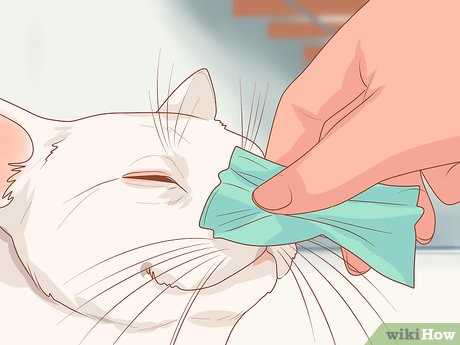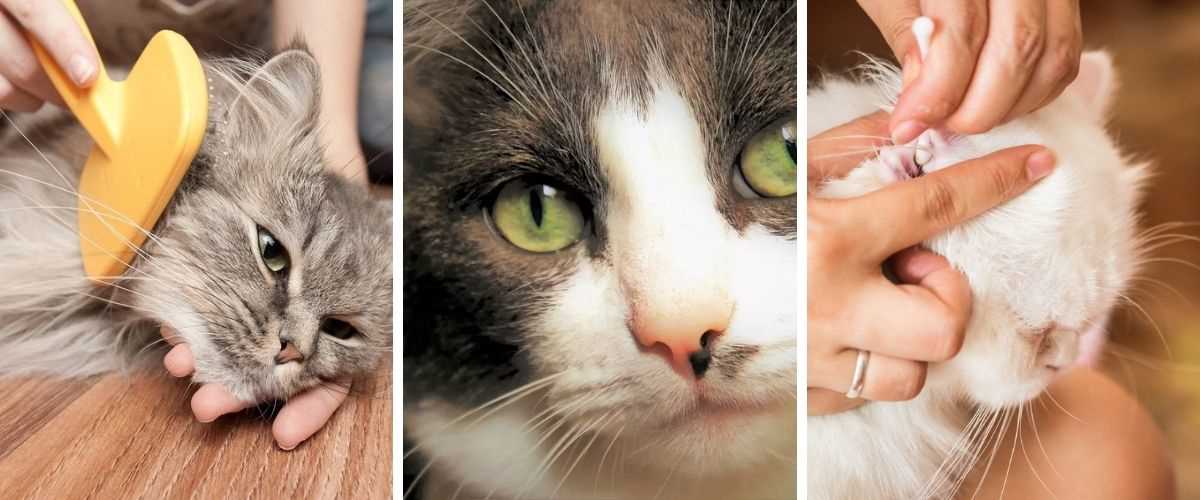

Using a soft, damp cloth works wonders for maintaining my adorable snout. Make sure the cloth is clean and slightly moist, as this helps to gently remove any dirt or residue without causing irritation.
Be gentle while approaching this task. Cats often have sensitive areas, and a calm environment aids in making the experience pleasant. If I’m feeling particularly fussy, a treat can act as a great distraction!
If any stubborn debris remains, a small amount of saline solution can be utilized. It’s safe and effective for delicate feline features. A few drops on the cloth can facilitate the process without risking irritation.
Regular checks ensure my charming little face stays clean and healthy. Establishing this habit is beneficial, and I appreciate the attention to detail! After all, a well-groomed snout is essential for any sophisticated feline like myself.
Identifying the Need for Nose Cleaning
Monitoring moisture levels is key. A dry or excessively wet snout can indicate a need for attention. If the surface appears crusty, it signals that action is required.
Observe for any unusual discharge. Clear fluid is typical, but yellow or green mucus suggests a potential issue. A change in color or consistency may warrant a closer look.
Behavioral Cues
Watch for frequent pawing or rubbing of the face. This behavior often indicates discomfort, possibly linked to irritation in the nasal area. Increased sneezing or sniffling may also suggest that something isn’t right.
General Health Indicators
Evaluate overall health. Lethargy, loss of appetite, or changes in grooming habits can all point to underlying problems. A thorough examination of the nostrils can reveal if extra care is necessary.
Choosing the Right Cleaning Materials
For optimal hygiene, select soft, lint-free cloths or cotton balls. These materials are gentle and won’t irritate sensitive areas. Avoid paper towels or rough fabrics, as they may cause discomfort.
A mild saline solution is ideal for moistening the cloth. You can make this at home by mixing a teaspoon of salt in a cup of warm water. This solution helps in loosening debris without harming delicate skin.
Consider using pet-safe wipes specifically designed for facial cleaning. Ensure they are free from harsh chemicals or fragrances, as these can lead to irritation.
After cleaning, it’s important to monitor any changes in behavior or health, especially if your feline friend has special dietary needs. For example, if your companion has liver issues, proper nutrition is crucial. Check out this food for cats with liver disease to ensure a balanced diet.
Always keep your cleaning area organized and free from clutter. This will help you maintain focus and ensure that you have everything needed for a successful cleaning session.
Step-by-Step Guide to Cleaning Your Cat’s Nose

First, find a quiet spot where I feel comfortable. It’s important to stay calm. Gently hold my head or let me rest in your lap.
Next, take a clean, soft cloth or cotton ball and dampen it with warm water. Be sure to wring it out, so it’s not dripping wet. A little moisture goes a long way.
Carefully approach my face and lightly wipe around my nostrils. Use a gentle motion to avoid any irritation. If there’s any crust or dirt, it should come off easily. Make sure to clean both sides, but don’t push too hard.
If stubborn residue remains, consider using a bit of saline solution. Ensure it’s safe for pets before applying. Moisten the cloth with this solution for an extra boost.
After cleaning, reward me with a treat or some affection. This positive reinforcement makes future grooming easier.
For those needing a deeper clean for larger pets or spaces, check out the best pressure washer for van, but for my little nose, gentle is the way to go.
Tips for Keeping Your Feline Friend Calm During the Process
Offering treats can create a positive association. Choose favorites to reward good behavior throughout the experience.
Maintain a soothing voice while handling the situation. Gentle words help ease anxiety and build trust.
Create a Comfortable Environment
Set up a familiar space with cozy blankets or toys. A calm atmosphere reduces stress and makes the task easier.
Consider using pheromone sprays or diffusers to create a relaxing ambiance. These products promote tranquility for many furry companions.
Engage in Play Beforehand
Engaging in a play session can help expend excess energy, making the little one more relaxed during the procedure. A few minutes of playtime can work wonders.
Observe for signs of discomfort and adjust the approach as needed. Being attentive supports a more peaceful experience.
Signs of Potential Health Issues Related to a Dirty Nose
Discharge from the nasal area can indicate various health concerns. Pay attention to the following signs:
- Excessive Mucus: A significant increase in mucus production may suggest an infection or allergy.
- Color Changes: Yellow or green discharge often signifies a bacterial infection, while clear mucus might indicate allergies.
- Foul Odor: An unpleasant smell can be a sign of an underlying infection or dental issues.
- Swelling or Redness: Inflammation around the nasal area may indicate irritation or an infection.
Monitor for any signs of difficulty breathing. Labored or noisy breathing can be serious and requires immediate attention. If sneezing episodes become frequent, this may also point to respiratory issues.
Keep track of changes in behavior. Loss of appetite or lethargy alongside nasal issues can signal a more severe problem. Regular observations help in early detection of potential health concerns.
If any of these symptoms persist, consult with a veterinarian for a thorough examination. Quick action can prevent complications and ensure continued well-being.
When to Consult a Veterinarian for Nose Care

If discharge appears persistent or changes in color, a visit to the vet is necessary. Green or yellow mucus can indicate an infection, while excessive dryness or crusting may signal underlying issues.
Monitoring breathing patterns is crucial. Struggling for air, wheezing, or sneezing frequently may suggest respiratory distress. Immediate veterinary attention is warranted if any of these symptoms develop.
Changes in behavior, such as loss of appetite or noticeable lethargy, can indicate that something isn’t right. A vet should assess these signs, especially if they coincide with nasal problems.
For any swelling or unusual growths around the nasal area, professional evaluation is critical. Tumors or abscesses require prompt medical intervention.
In cases of frequent nasal irritations or allergies, consulting a veterinarian can help determine triggers and appropriate treatment options. Persistent issues may necessitate further investigation.
Regular check-ups can preemptively address potential nasal health issues. Keeping track of any changes can ensure timely veterinary care.








